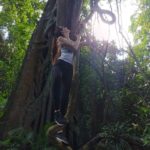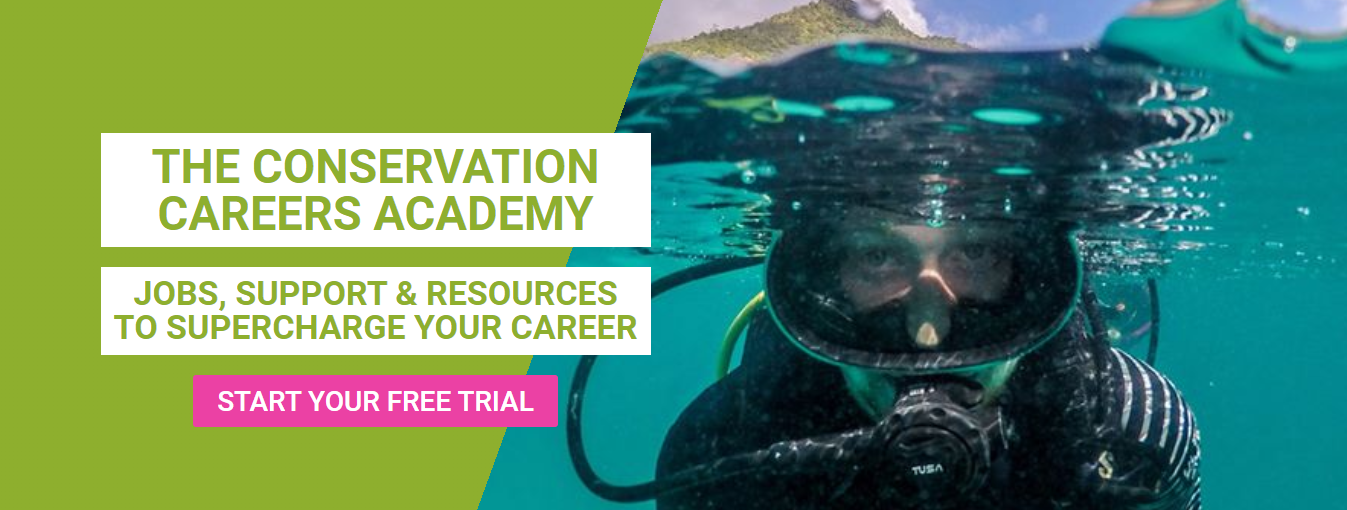
The Career of an Activist: An interview with Sibylle Riedmiller, founder of Chumbe Island Coral Park and Ecolodge
Read on to hear the journey of Sibylle Riedmiller, founder of Chumbe Island Coral Park (CHICOP) – the world’s first privately managed marine protected area (MPA) fully funded by ecotourism. In her words, this is the “career of an activist”, and her journey is one which has been achieved through pure passion and relentless drive.
Located in the tropics of Zanzibar, on a small, formerly uninhabited island off the coast of Tanzania, CHICOP is a truly significant accomplishment in conservation, becoming the world’s first self-sustaining marine park in the 1990s. The MPA protects the forest reserve on the island and the surrounding reef, while housing a visitor and education centre, and ecolodge.
CHICOP is exemplary in achieving standards of conservation, education and empowerment for local communities in the area. While typical standards of sustainability aim to minimize the impact on the environment, the concepts of regenerative design and development which CHICOP is based on revitalize both the environment and local community, enabling them to become self-sustaining in the long-term.
After launching operations in 1998, Sibylle withdrew from the day-to-day management of CHICOP, though she continues to oversee the initiative as Director. Since then, she has been working with tourism associations lobbying for nature conservation. Currently, she is Chair of the Conservation Committee of the Board of Directors of the Hotel Association of Tanzania (HAT), Secretary of the Tanga Tourism Network Association (TATONA) and Member of the IUCN World Commission of Protected Areas (WCPA).
The Journey of a ‘Career Switcher’: CHICOP’s Beginnings
“My professional career had been in the development aid industry as a Project Manager and Consultant, primarily managing education reform projects. In 1982 I began work in coastal Tanzania, discovering my passion for sailing, snorkeling, diving, and coral reefs. Over the next few years there, I was witness to the widespread reef destruction occurring in the area and became deeply affected by it.”

Sibylle diving in the Chumbe Reef Sanctuary, holding a Pincushion starfish (1995).
“You didn’t need a conservation background to see what was going on – it was an environmental disaster. The main issue was dynamite fishing, a common and destructive practice, generally with only a 3% harvest rate from what’s killed. There was little awareness amongst local fishers and communities, and lack of governmental regulations or policies recognizing the importance of coral reefs and why these fishing methods were problematic.”
“So I thought, ‘why not do something myself to raise awareness about the incredible value of coral reefs being destroyed on a daily basis?’. I was also at a point in my career where I had become disillusioned by the lack of sustainability in the aid industry, so this was an opportunity for a different approach; to build something that could last into the future.”
“With the idea in mind to establish a marine protected area that could be funded by ecotourism and support education, I quit the aid industry and became a social entrepreneur. I had the means to invest my own resources into the initiative, and I was one of the first foreign investors in the country.”
“To find the suitable site, I spent March-April 1991 travelling around Zanzibar with local fishermen looking for a coral reef still in good enough condition to protect. To become a fully protected area, all fishing and anchorage would be excluded, therefore, there needed to be minimal displacement of local fishers. Additionally, the reef needed to be accessible for tourists, while being shallow enough to see and learn about corals through snorkeling. I was looking for a reef, not an island, but finding Chumbe proved even more of an opportunity.”

Sibylle sailing her catamaran off the coast of Tanga, Tanzania in 1995.
“Once the area was chosen, I began negotiations with the government for the land lease, investment permits and management contracts to be allowed as a tourism investor. The government wanted to bring in tourism but would not yet see the need to protect wildlife and landscapes.
After four challenging years of negotiations, my conditions were met. The forest on Chumbe Island and reef were to be protected as a park with the management rights conferred to CHICOP. We would develop and manage the park professionally, at our own expense, and regularly report to the respective government agencies and an Advisory Committee with representatives from local communities, government agencies and academic institutions. We also registered the MPA with the IUCN-World Conservation Centre and commissioned and employed marine and other scientists to ensure everything was done according to the best practice standards for conservation.”
The Value of Private Management in Conservation
Chumbe quickly became one of the most successful parks in Africa, with one of most stunning coral reefs and diverse coral rag forests in the region. Three decades after initiating the project it continues to thrive, and has provided a learning platform for thousands of school children, teachers and community members.
Worldwide, many government-run parks are what can be called ‘paper parks’: protected on paper, but with no effective management on the ground to protect the biodiversity from exploitation and destruction. One major reason for this is that the funds generated are rarely made available for on-site management. Indeed, a comprehensive study of 556 parks in 51 countries by Balmford et. al. (2015) found that of the approximately 600 billion USD generated annually by tourism to these parks, on average only 2% of these funds went back into park management and maintenance.
In contrast, Privately Protected Areas run by passionate conservationists have a very different formula. In the case of Chumbe, 100% of the income from ecotourism goes into park management and our education programs.
Learn more about CHICOP’s education programs.

Chumbe Island and ecolodges.
Engaging the Zanzibar Community
Another important element of conservation is to ensure that local people benefit from the preservation of nature rather than from its destruction. To win over local people to support conservation, they need to see these benefits.
“Since the beginning, Chumbe has created jobs for local community members in all aspects of the project; from operations and administration, to ecolodge management and maintenance, through to conservation management, monitoring and education. Former fishers were trained as park rangers, to not only enforce the no-take zone, but also educate their fellow fishers about the importance of coral reefs, and in particular, the concept of the ‘spillover effect’.”
“Marine and terrestrial parks differ in this sense in regards to wildlife preservation: in terrestrial parks, when animal populations grow, the ensuing human-wildlife conflicts often threaten livelihoods of local people. In contrast, with marine parks, the benefit sharing is automatic – once you effectively protect the area, within two to three years the fish populations flourish, and the ‘spillover’ into nearby fishing areas will increase harvests there.”

Training session for housekeeping staff in the Chumbe Education Center, 1998.
“When we began to develop the CHICOP project, we needed both local people and expert trainers. We were fortunate that many people were inspired by the project and were willing to volunteer, training the team in a wide range of skills over many years. For many of these community members, working with Chumbe has become a life-long career.”
Regenerative Conservation through Ecotourism
Worldwide, there are few examples of sustainably funded marine parks. Chumbe wasn’t developed by a tourism investor following market demands in ecotourism – it began through a true passion for conservation and education.
All infrastructure on the island has been built using eco-technologies designed for zero impact on the environment, including elements such as rainwater catchment, photovoltaic energy/solar water heating, composting toilets and vegetative greywater filtration systems. Operations are likewise embedded in sustainability, with waste products minimized, recycled or repurposed.

A private ecolodge at CHICOP.
Visitors to the island can experience true ecotourism at its finest, and can see where their money is going in conservation and education.
The Future of Protecting Coral Reefs
With climate change impacts devastating coral reefs around the world, having refuges for marine ecosystems, like Chumbe, has become ever more important.
Increasing water temperatures are causing coral bleaching and death, and ocean acidification weakens the calcium structures built by corals, shells, plankton, etc. Reefs are struggling to adapt and survive, and their plight is magnified when they face other daily threats such as fishing and anchoring.
Having set-asides and protected areas like Chumbe is becoming increasingly critical to allow reefs to survive these accelerating threats to marine ecosystems. For coastal populations, like those in Zanzibar, understanding these threats and protecting reefs has never been as important as it is today. This is why the Chumbe education program is free to all school children, teachers, fishers, community groups and government officials.

A park ranger preparing local villagers for snorkelling in the Chumbe reef.
Advice to Aspiring Conservationists
“Starting with a passion for a mission, and learning from experiences is key, and you will likely find yourself having to put in considerable time, energy and effort, for longer than you might imagine. Finding professional help and volunteers to start a social project is not difficult, but generating enough funding to keep it above water can be a real challenge.”
After more than two decades of financial sustainability, even Chumbe is facing this challenge with the collapse of tourism through the pandemic.
[Conservation Careers note: if you’d like to learn more about finding a career in ecotourism, check out our ultimate guide to Careers in Ecotourism]
The Pandemic and Conservation
The pandemic has been very revealing of how much some countries or regions rely on tourism, particularly in areas where it has become a major source of employment and income. Tourism in protected areas in particular contributes significantly to a country’s income. However, as tourism has collapsed, protected areas can be seen to have lost their economic value, making conservation a liability for governments.
“At CHICOP, it continues to be our priority to maintain the protection and conservation of the island. Before the pandemic, CHICOP was 100% self-sustaining with the funds derived through tourism to our ecolodge. However, when tourism came to a halt, we lost our only source of funding and have since been relying on crowd-funding and donor aid to continue our work. It is crucial that we keep our operations going through this incredibly difficult time, and we are grateful for all and any support we might receive so we can continue the Chumbe legacy long into the future.”
Interested to support CHICOP’s conservation and education efforts?
Donate through GoFundMe here.
Main image: Chumbe Island Coral Park, Zanzibar, Tanzania
Author Profile | Stephanie Medwenitsch


